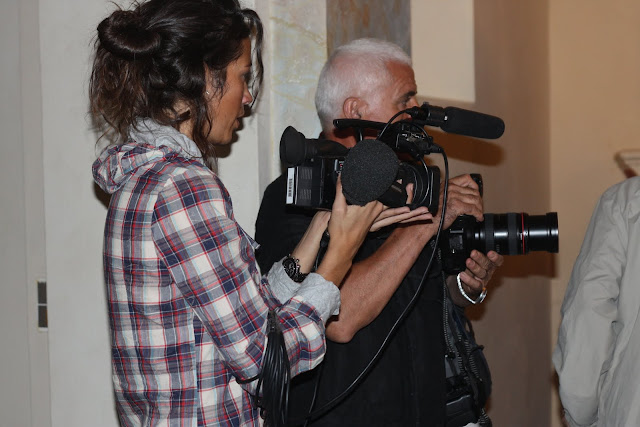Festival A Santa di U Niolu...Coriscan Facts
I still miss so much about the states and small town America, especially Texas. The culture and events and vibe, but I am learning to be thankful for experiencing things outside of my comfort zone. Through living and learning about another culture, God has reminded me just how big he is. He has and is opening my eyes and heart to so much more then I could have imagined.
Last Wednesday we went to a near by village to check out the "Santa" Festival, which is considered one of the largest and more important festivals in Corsica. And is one of the oldest. Each year, on the 8th of September, the people gather together to celebrate the Statue of the Virgin Mary, which has been worshiped for centuries by the Corsicans. The morning begins with a mass and the wooden statue is carried out of the church and placed next to an old crucifix in front of the altar. At the end of the mass a group of men carry the statue of the Virgin Mary around the village square. The Fraternity of Saint Anthony, white robed penitents, form the granitula, a spiral procession that has great significance in the Corsican culture. In afternoon, traders erect their stalls and sell their products like lonzu, coppa, wine, honey, liqueur and eau de vie. The mountain shepherds also gather to compete with one another in the improvisations and the 'Chjam' è Rispondi', a musical dialogue of rhymes. They demonstrate a quick wit, often very humorous. The verses sang by the older men are full of poetry. The singer who is best in expressing himself is rewarded by applause and laughter from the audience.
They believe that the story of the Statue Santa all begin on a stormy night back in the 15th century a ship had been blown off course near Galéria. The situation seemed hopeless, but the captain prayed to the Virgin Mary for assistance. In his despair he vowed to donate the most beautiful statue of the Madonna he could find in Genoa. Immediately a strange light appeared above the Franciscan Monastery at the foot of the Tafonata forest. The captain kept his promise and the statue was erected in the monastery church. During the 16th century, when the Turks destroyed the monastery, the statue of the Madonna was saved. It was carried by mule high up into the mountains of the Niolo. When the mule reached the village of Casamaccioli, it suddenly threw the statue to the ground. The statue was placed in the Chapel of Saint Antoine near the cemetery. The next day it miraculously reappeared in the middle of the village.After this had happened several times, the shepherds of the Niolu built a church dedicated to the Virgin. Ever since that day, they have celebrated the festival of the Nativity of the Virgin.
Ferdinand Gregorovius wrote in his history of Corsica in 1852 about this region of Corsica: "In this region dwell the strongest men on Corsica, patriarchal shepherds who have faithfully maintained the tradition of their forebearers. Info taken from Here.
a media event

a pretty building and a place to make money

children kissing the feet of the statue and those giving offerings

The faithful Corsican Ladies who hold strong to their traditions.

above photo of the church is from here.







I just found your blog via a friend's blog (Radical Love: Living a Missional Life) and look forward to following along on your adoption journey. My husband and I brought our daughter, Charlotte, home from Ethiopia in May 2009 and are in the process of adopting twins from Ethiopia! Many blessings to you and yours!
J
www.gfinkfamily.blogspot.com
Beneath the Acacia Tree